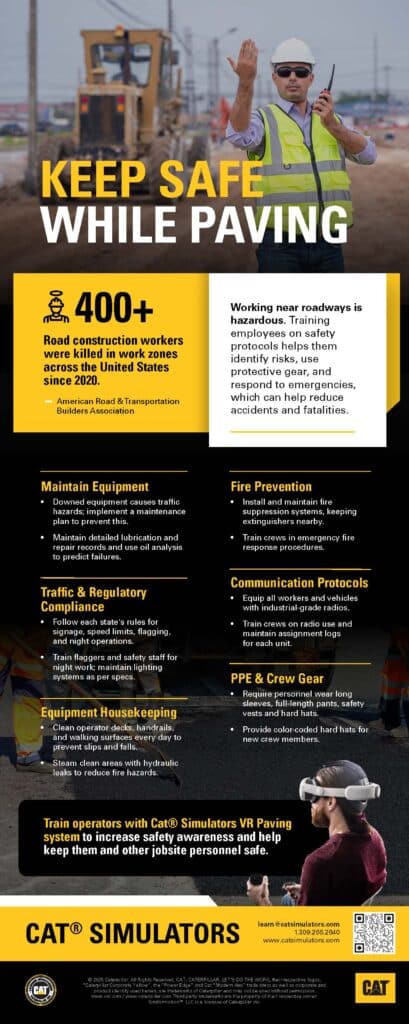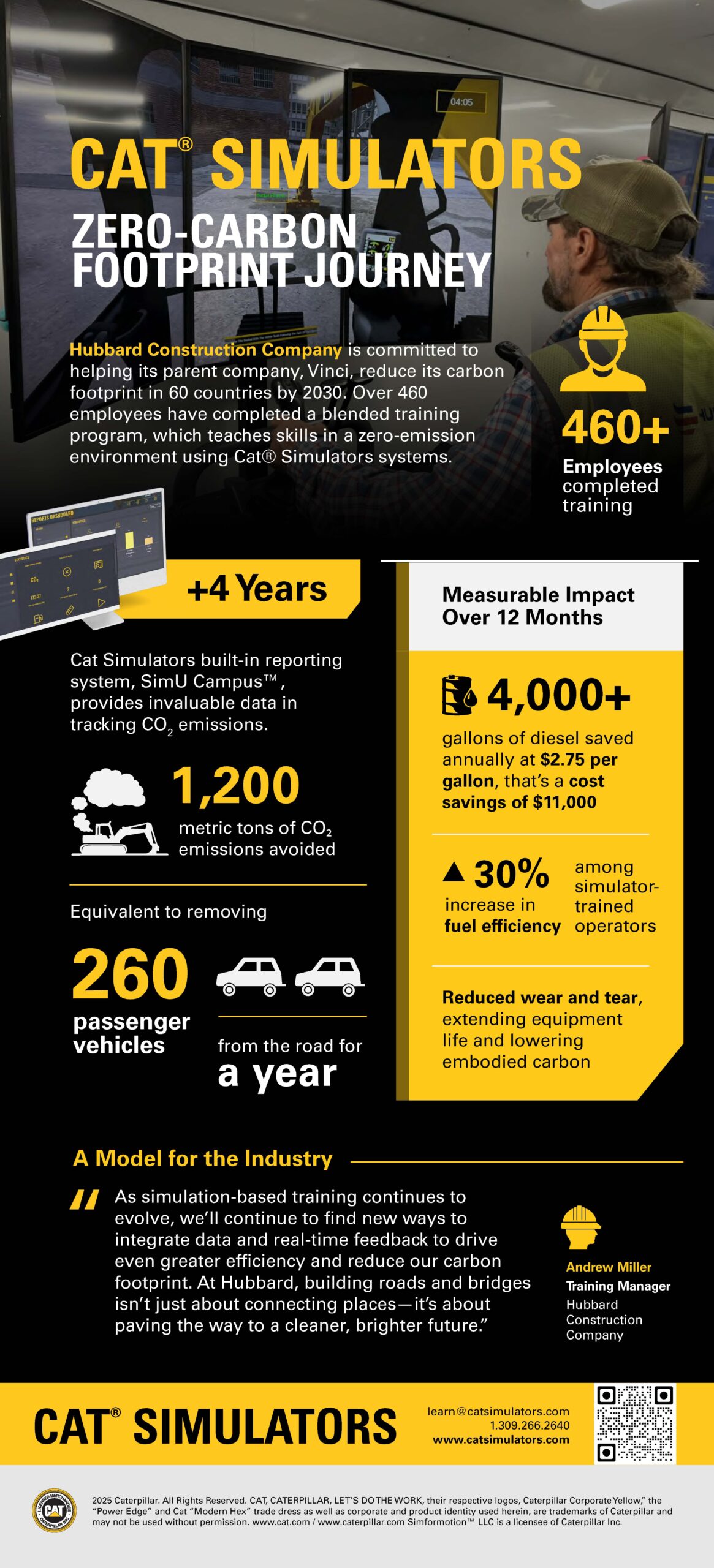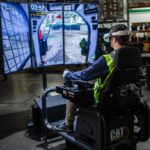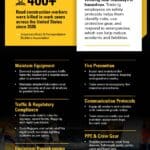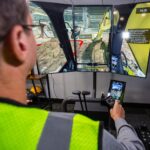With over 105 years of experience in infrastructure, Hubbard Construction Company, based in Florida, is committed to helping its parent company, Vinci, reduce its carbon footprint across 60 countries by 2030. As a European company, Vinci is committed to sustainable construction methods.
The zero-carbon goal has changed how Hubbard trains its workers, operates its equipment and measures success in the United States. The company continually improves everyday practices, such as vehicle management, tracking idle times and operator training.
“Sustainability starts at the ground level—literally,” said Andrew Miller, training manager for Hubbard. “Traditional operator training relies heavily on real equipment, and that means burning thousands of gallons of diesel before a single job even begins.”
Miller explained that Hubbard flipped the training model by integrating Cat® Simulators systems into its programs. The engaging, state-of-the-art simulator systems replicate real-world equipment and scenarios, allowing operators to build skills in a zero-emission environment.
“Right now, our program includes four motion-based Cat Simulators—the Excavator, Dozer, Compact Track Loader and Small Wheel Loader,” said Miller. “That mix gives us the flexibility to train across a wide range of job functions, from earthmoving and grading to material handling and site prep. Our trainees range from entry-level operators to students fresh out of high school to seasoned project managers.”
Miller continued, “We run training programs for every type of equipment we use. It’s a blend of theory and hands-on practice. Trainees start on the simulator in a controlled, safe environment, then transition to real machinery. Only after they train on the simulators do they work on active jobsites, like highways.”
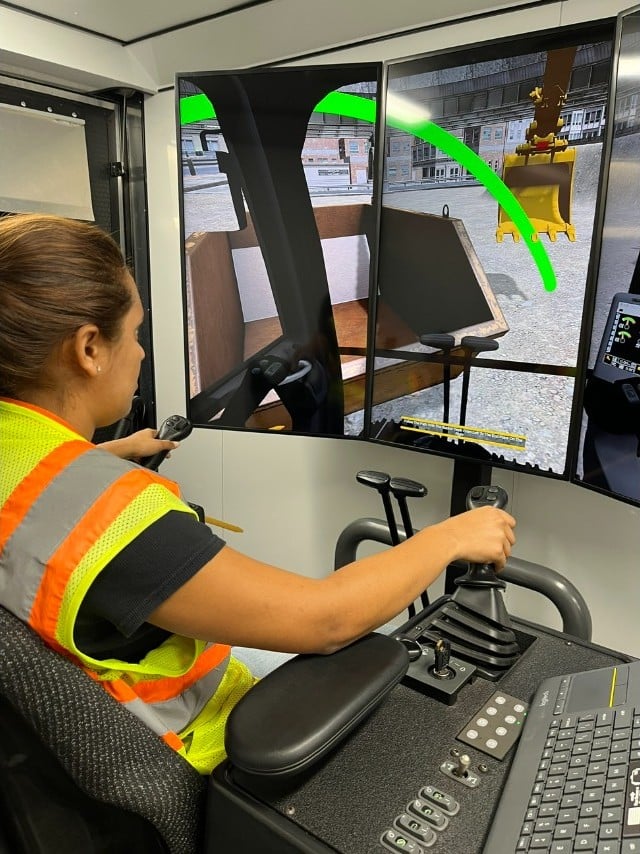
Measurable Impact
“We’ve been monitoring our carbon footprint for about four years now. That’s when I really started digging into the data. It’s been a gradual process, but over the last 12 months, we’ve made it a major focus. And the results are starting to speak for themselves,” explained Miller.
The results have been substantial. By replacing a significant portion of its heavy equipment operator training with simulator training, Hubbard has achieved:
- 4,000+ gallons of diesel saved annually
- 1,200 metric tons of CO₂ emissions avoided—equivalent to removing 260 passenger vehicles from the road for a year
- 30% increase in fuel efficiency among simulator-trained operators
- Reduced wear and tear, extending equipment life and lowering embodied carbon
“In August alone, we saved 260 gallons of diesel fuel. Year-to-date, we’ve saved approximately 1,300 gallons. At $2.75 per gallon, that’s a cost savings of $3,562. And that’s without factoring in the long-term benefits to our equipment and the environment,” shared Miller. “Our year-to-date numbers are just from the two motion-based simulators that we tow around in a trailer. With just those two simulators, we’ve eliminated 28,746 pounds of CO₂ compared to what we would’ve emitted if we trained on real equipment at actual job sites.”
To date, 464 employees from Tampa to Orlando to Jacksonville have completed the blended training program. With 25 to 30 active job sites operating at any given time, the use of simulators in mobile trailers has been key.
“Every step counts,” Miller explained. “We’re finding ways to make sustainability part of every department—including training, which traditionally hasn’t been seen as a revenue driver. But when you align every team around a common goal, you start seeing real results.”
Leadership Drives Change
Hubbard’s training team includes three full-time instructors, three full-time assistants and two curriculum writers. Throughout the year, the team expands to include between 15 and 18 field trainers, who are senior project engineers, foremen, and other experienced personnel, all of whom bring deep operational insight to the training process.
This level of expertise enables Hubbard to provide consistent, high-impact training across various jobsites and roles. The team also works closely with Simformotion to customize the Cat Simulators system’s reporting tools.
“One of the things that drew us to Cat Simulators was Simformotion’s willingness to customize the reports,” said Miller. “Simformotion’s Account Manager, Nate Hurn, worked with us to generate the reports we needed, especially around carbon emissions and fuel usage, which are huge for us.”
“I actually just sent one of those reports to our president and CEO,” added Miller, “and his response was, ‘Awesome job, guys—way to go!’ He loves having that kind of data at his fingertips.”
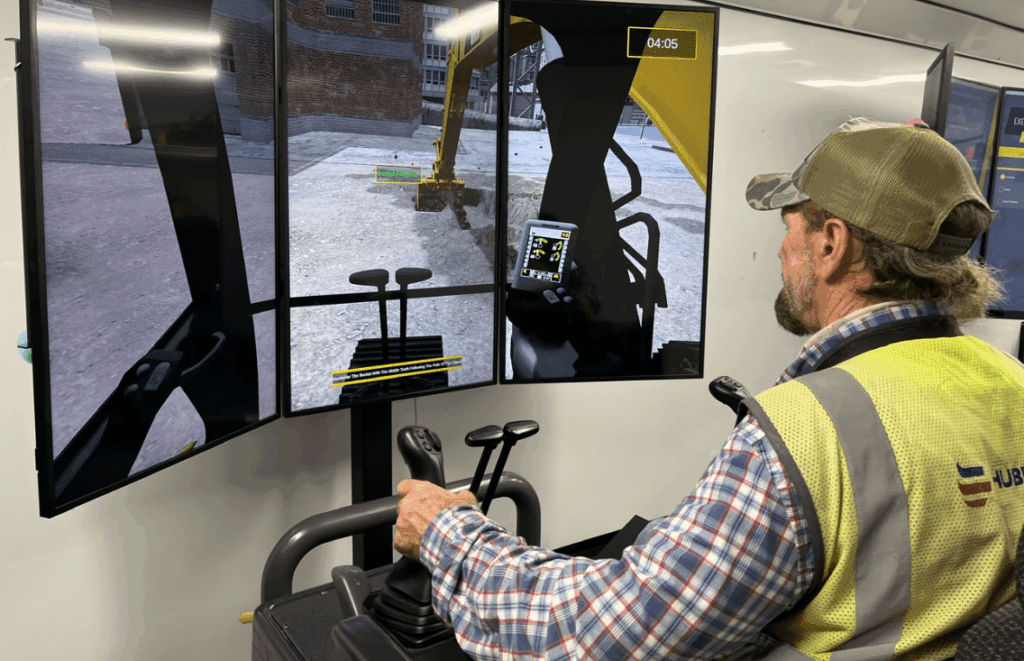
A Model for the Industry
The company’s approach to achieving a zero-carbon footprint has been recognized as a model for sustainable construction practices in the industry, demonstrating that environmental responsibility and business performance can go hand in hand.
“As simulation-based training continues to evolve, we’ll continue to find new ways to integrate data and real-time feedback to drive even greater efficiency and reduce our carbon footprint,” said Miller. “At Hubbard, building roads and bridges isn’t just about connecting places—it’s about paving the way to a cleaner, brighter future.”
Hubbard Construction is taking its sustainability commitment one step further by developing a personalized Sustainability Dashboard within the existing employee app. This app, already used for tasks such as PTO requests and company-wide communication, will soon provide employees with real-time insights into their environmental impact.
“The dashboard is going to pull data from our Cat Simulators, live equipment, and idle rates to calculate each employee’s fuel usage and carbon output,” said Miller. “Based on the equipment they’re assigned to, operators will be able to see exactly how much CO₂ they’ve generated—and more importantly, how much they’ve saved by improving idle time and operating more efficiently.”
Miller notes that idle rates are a significant challenge, especially in Florida, where air conditioning demands often keep vehicles running unnecessarily. Reducing idle time by even 50% would be a major win, and this dashboard is designed to help employees visualize their role in that effort. By making sustainability personal and measurable, Hubbard is reinforcing the idea that every department—and every individual—has a part to play in reaching the company’s environmental goals.
“This tool shows each person how they’re making a difference,” Miller says. “When every team is aligned, we get there faster.”
